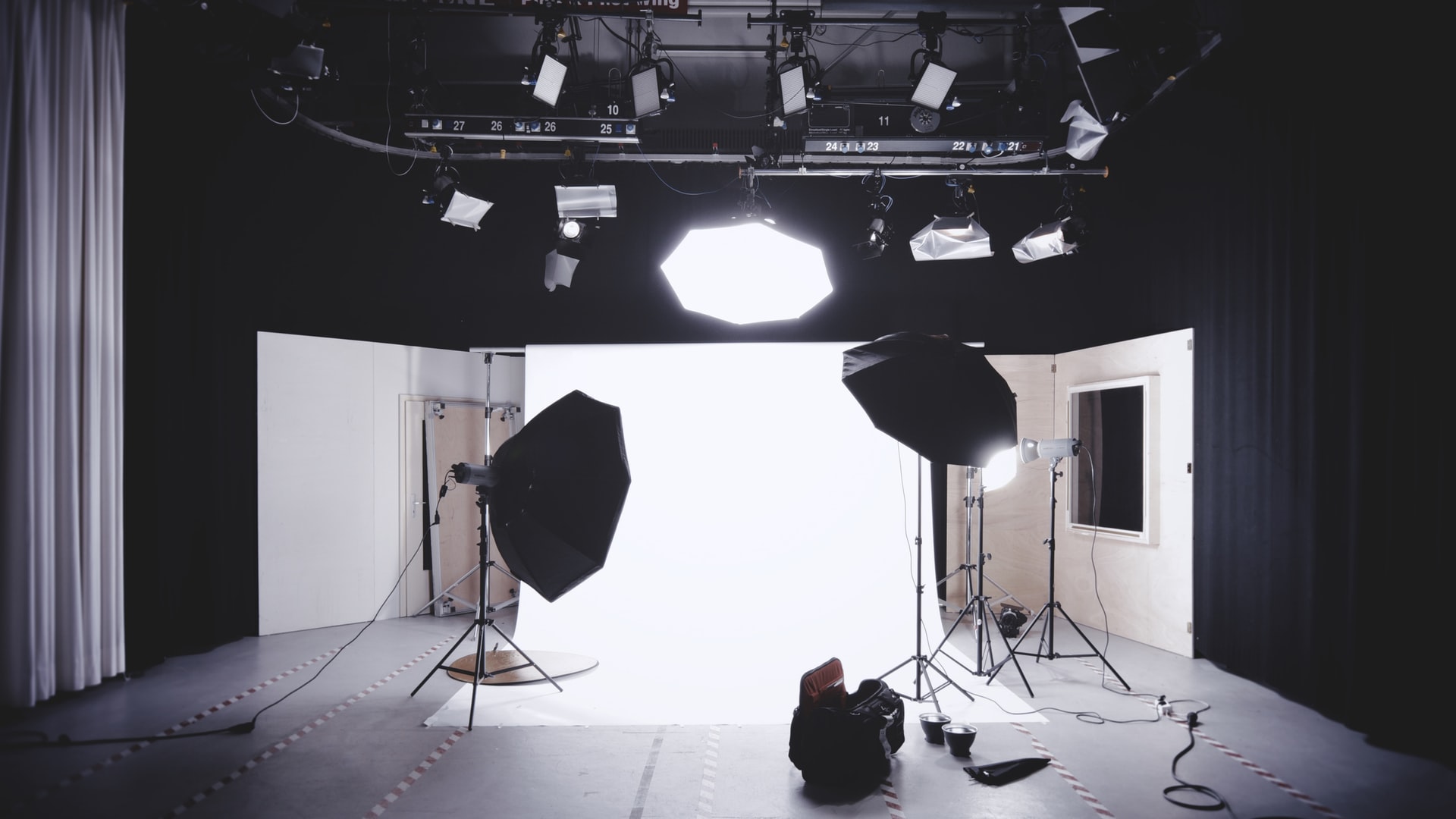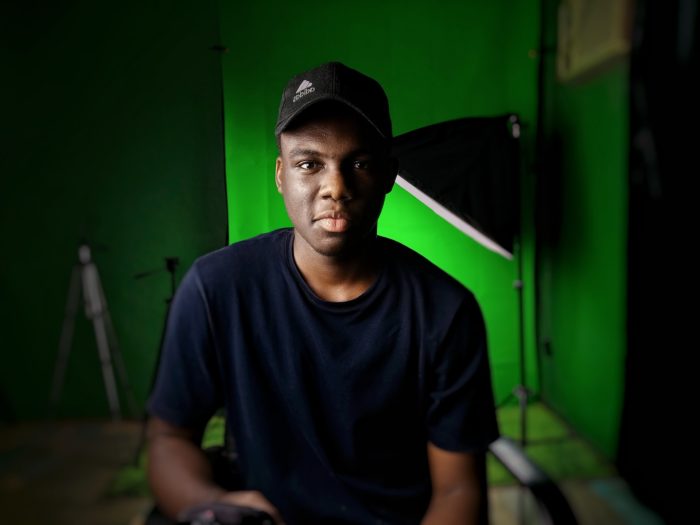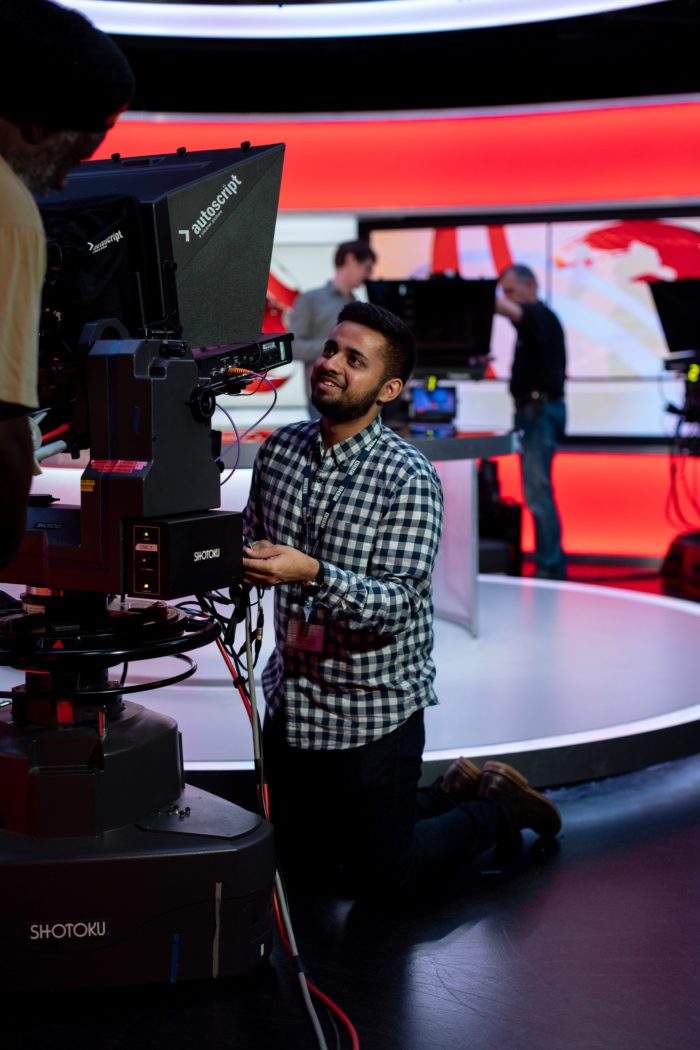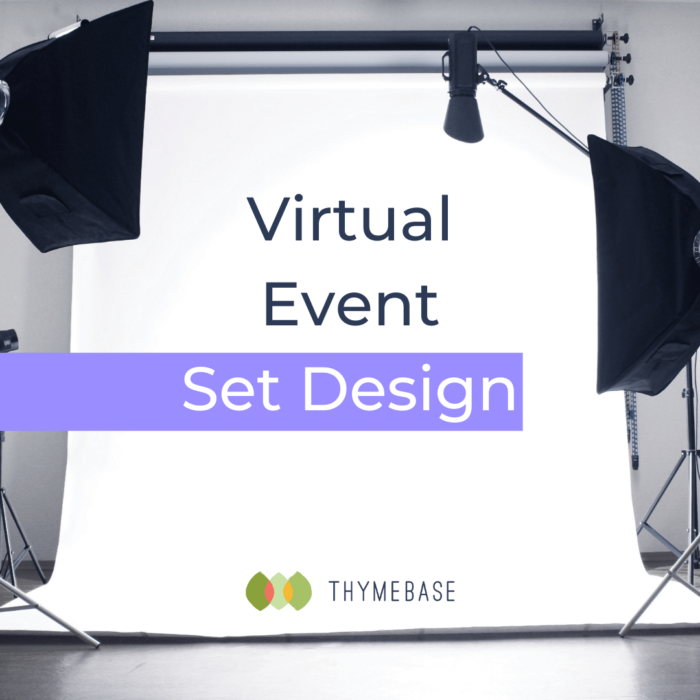Virtual event set design might be the single biggest differentiator between a virtual event and a webinar. So if you’re looking to infuse professionalism and a wow-factor into your virtual event, a blank wall won’t cut it.

Content Isn’t King. It’s Engagement.
When it comes to virtual events, content matters. You won’t find anyone disputing the importance of good speakers sharing insightful information. I’d go so far as to say content is what drives the registrations to your virtual event.
But how do you keep attendees engaged? How do you ensure that they stick around and watch, rather than playing your digital conference in the background as they argue on Twitter? As people watch at home, with all the distractions of kids, pets, and life partners, engagement is the problem to solve. And maybe virtual event set design is a part of that solution.
According to Event Manager Blog, Design is a key part of the engagement puzzle, as it can convey a higher production value and help keep attendees’ attention on viewing the event content and exploring the platform.
Related: Virtual Event Sponsorship Is Risky. Here’s What Organizers Can Do About It.
From Event Planner to Event Producer
I was speaking recently to an event planner who specializes in conferences. She made the point that now, she’s less of a planner and more of a producer. Producing events is closer to TV production than ever before.
That includes learning about cameras, broadcasting, live video transmission, and even bandwidth. But there’s still the creative aspect, the designs that create an atmosphere for attendees. But in place of balloon decor, banners, and food presentation, event planners display creativity in the set design and production value.
Related: Planning A Virtual Event: Almost Everything You Need To Know
Virtual Event Set Design Sets You Apart
Okay, we’ve all attended some virtual conferences or digital events or whatever that were nothing more than Zoom meetings with more people. And that’s fine. I’m not knocking it. In fact, they can be lovely.
Zoom fatigue is real, and it’s likely impacting your engagement. But why doesn’t this apply to the hours of TV we watch each day? We can binge-watch The Umbrella Academy, but the thought of another Zoom call sets our teeth on edge. Why?
I believe it’s production value.
When you care about the set design for your virtual event and ensure it has an almost TV quality level of professionalism, you’ll hold attention better. Viewers will be more engaged, your speakers will be more energetic, and the overall experience will feel better.
Professionalism isn’t difficult to achieve in virtual events, and yet so many deprioritize it. So if you’d like to stand out from the crowd, invest in your set design.
The Very Basics Of Virtual Event Set Design
You can talk to theatre pros about this if you’d like, but I’ll start by stating the obvious. But although I’m not exactly breaking new ground with what I’m about to say, you’ll note that so few virtual event speakers give this the slightest thought.
Lighting For Virtual Events
I mean, come on. Lighting is important. How many people want to stare at a screen that looks like an overcast day? It casts a gloom over the experience. So get the virtual event lighting right. At the absolute minimum, you need the light shining toward the speaker, not behind them.
It’s not a bad idea to invest in a ring-light, and you’ll find affordable options online or at any local camera shop.
Backdrops
I’ll talk more about backdrops below, but again, we’ll start with the basics. A blank wall is boring. It’s better sometimes than a messy living room or a cluttered bedroom, but not by much.
I recently watch a digital event in which the speaker spoke from what looked like a walk-in closet. I suspect he wanted to show off his sneaker collection. And yes, I was massively distracted by his shirts on hangers, and I spent much of his talk wondering if anyone needs that many shoes.
While lighting is easy, setting the right background is less so. And that’s why I’ll spend a little more time on this.
Virtual Backgrounds Suck
Please don’t use the virtual backgrounds on Zoom. They suck. They don’t look right, they don’t work well, and they’re very distracting. And if the speaker is someone like me, who talks with their hands, it gets even sillier. It’s like the uncanny valley of meetings.
Let’s be unequivocal about it. Zoom’s virtual backgrounds do not count as virtual event set design.
Green Screen Backdrops

Photo by King Buwa
Wait, isn’t this the same as the virtual backgrounds I rail against above? No. This is different. Trust me.
See, if you have a real green screen, you can stand in front of it. This distance removes the weirdness of a digital background, and it feels way more natural. Then you can get creative with your design, using still images, animation, or even video.
Real Backdrops
It’s a great idea to build your own sets, especially for larger virtual events like conferences. It’s not expensive to work with event design experts to create real, gorgeous, branded, and creative backgrounds. Considering the costs saved in going virtual, this isn’t a prohibitive expense.
They look organic, they feel right, and they’re pretty cool. And if you’re shooting on decent cameras and have your lighting right, a real backdrop will look fantastic and give a far more in-person vibe to the whole undertaking.
Backdrops Are A Unifying Factor
If you have multiple speakers at different locations, it’s a great idea to design the backdrops. This is an opportunity to create brand cohesiveness and infuse a sense of design and decor into the event.
When the backdrop behind each speaker is the same, or stylistically related, your virtual event set design feels unified. Again, you’re leveling up your event’s quality and professionalism.
Virtual Event Studio Set Design
You may have come across some virtual events filmed in studios, not very different to live TV broadcasts. There’s no denying they look gorgeous. Salesforce did this exceptionally well.
Virtual event studios offer something called multi-cam live streaming. Multi-cam streaming means broadcasting live from multiple cameras, offering different angles, a little like live sportscasts you’re used to. It’s a bit complex to set up yourself but possible. Still, working with a real studio offers way better production value.

The Difference Between A Webinar And An Event
Want to know the difference between a webinar and a virtual event? It’s the virtual event set design. The better you do this, the more credibility your event will have. It will demonstrate that you’ve invested in your virtual conference. This, in turn, will hold the attention of attendees because they’ll only care if you do.

